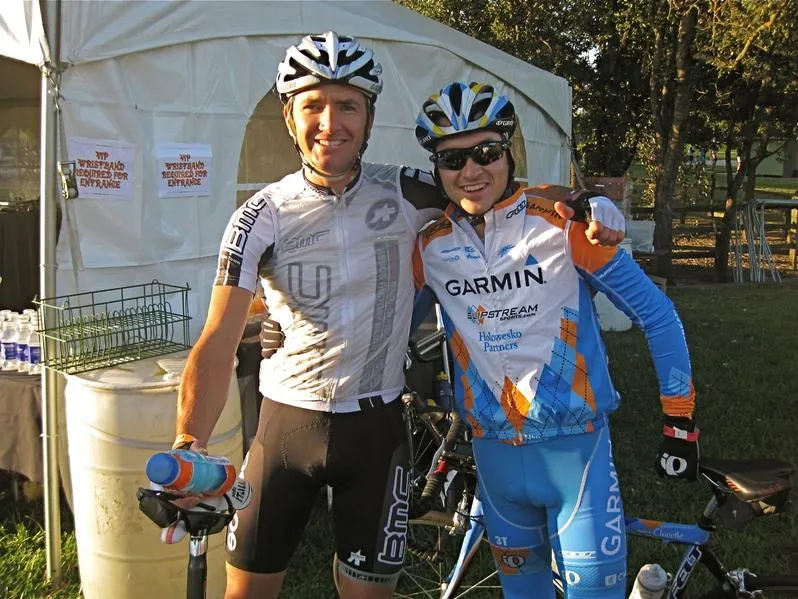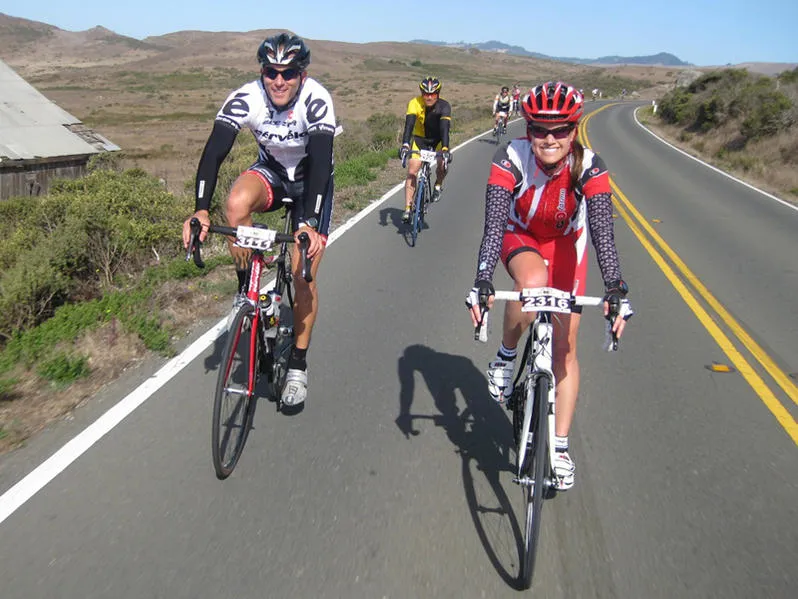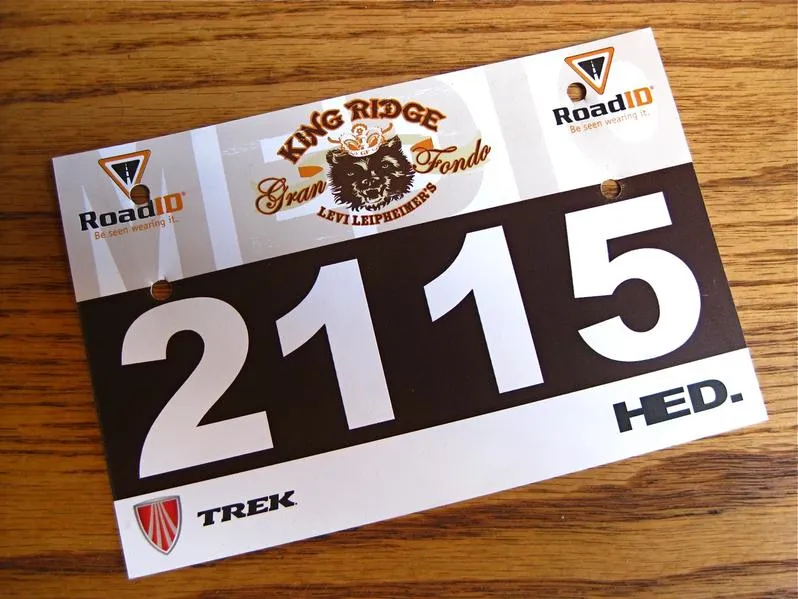Gran fondo events are gaining a foothold in the United States, first with the Colnago, then Levi Leipheimer rides drawing thousands to organised events in California in 2009.
The organisers of the popular Sea Otter Classic recently announced a gran fondo in 2010, as did Poison Spider bike shop owners Scott and Karen Newton in Moab, Utah.
Are American gran fondos just a fad, or are they the type of event needed to draw more devoted cyclists to the roads? BikeRadar asked a handful of bike industry experts their opinion on the matter, including 02 Media's Paul Skilbeck, organiser of the Levi Leipheimer King Ridge Gran Fondo, Trek's global marketing director Dean Gore and BikeRadar's L'Etape du Tour rider and diarist Lindsay Crawford.
Paul, you and I spoke recently during the NorCal League group ride about gran fondos catching on like fire in the US. How do they differ from century rides or brevets?
Paul Skilbeck: A gran fondo falls somewhere between the toughness of a brevet and the luxury of a century ride. It is shorter than a brevet, which tends to start at 200km in length, and is better supported with food, toilets and mechanical services. Both are timed, which is an important element.
The European model of the gran fondo is not as luxurious as the US model. The frequency of rest stops and the facilities provided at Levi's gran fondo were close to what we commonly see in a century ride, but the course was harder.
Century rides in the States don't have a mass start. Gran fondos do have a mass start. That makes a big difference to the feel of the ride. In a gran fondo you know where the fastest riders are (at the head of the field), whereas in a century they can be anywhere.
"The European model of the gran fondo is not as luxurious as the US model"
Also, a century ride is not timed, so you can't have an official comparison of your performance from one year to the next. Another thing that sets a gran fondo apart from the average century – but not all of them – is that pros ride with the amateurs, and some of those pros are going pretty hard, so amateurs can compare their times to the pros.
Dean, the recent Levi Leipheimer Gran Fondo brought 3,500 riders to Santa Rosa, including Axel Merckx. It would seem like a good idea to organise other big events – maybe even a series – some day in the US. Any plans?
Dean Gore: I don’t know of any plans for Trek or Trek Travel to get into the event promotion business. However, we really like the gran fondo concept. We're one of the lead sponsors of L’ Etape du Tour in France and our president, John Burke, has ridden it four years running.
Riders love a challenge, but many don’t want to buy a license and actually be a racer. The gran fondo idea is the perfect solution; a timed event on controlled roads. It's challenging, provides a goal to make daily rides more purposeful, and it can be the perfect mix of pain and the pleasure of accomplishment. Best of all, it accommodates riders of every type and speed. If promoters in the US. can put on good gran fondo events, we expect they will get great turnouts.
Paul, tell me how the Levi Leipheimer King Ridge Gran Fondo came about, and how you were able to pull off organising an enjoyable and successful first-time event in Santa Rosa...
Paul Skilbeck: With hosting costs for the Amgen Tour of California rising, the City of Santa Rosa was wondering where it would find the money. Levi suggested to the city manager, Jeff Kolin, that he could organise a fundraising ride. The project was handed to a Santa Rosa events organiser, Bike Monkey – whose largest prior event was less than a quarter the size of Levi's Gran Fondo – so in late April they approached me for help in steering them through the process.
The challenge was putting everything together in only five months. We all worked really hard. The Bike Monkey crew rose to the occasion and did a great job, but the main factor in the event's success was the support we had from the City of Santa Rosa. The General Services, Parks and Recreation, Economic Development and Tourism offices all worked very hard on the event and opened a lot of doors to make it a success, because they could see it would benefit their community. I've seen this level of municipal commitment to international stage races here in the USA, but not for a mere recreational ride.
This was more like working with a city in Italy or France. It was fantastic! And it shows what communities in this country – and others – are capable of when city officials open their eyes to the benefits of cycling events.
Lindsay, you've had plenty of experience doing road races and cyclosportives in Europe. What do you think of the gran fondo concept making its way to the US?
Lindsay Crawford: I would include the titles "cyclosportive" and "sportive" with "gran fondo" to identify the typical cycling events in Europe. Generally, gran fondo is used in Italian events and sportive in other countries. The UK has, in my opinion (and a few others), hijacked the term "sportive" to name many of their large timed rides. The UK events usually are somewhere between century rides and classic Euro sportives.
The events I've ridden in Europe (L'Etape du Tour, Quebrantahuesos, L'Ariégeoise and Giro Lombardia) are timed events with recognition of the fastest in each category with prizes and trophies. In Italy, one can actually earn a fair amount of prize money with organised teams riding to support their designated rider.
I use marathons as an analogy when explaining what it is like in Europe. In other words, seeded riders going for a high placing and others that enter for the experience of the event and with lesser goals.
It appears the common denominator to most gran fondos is having a celebrity rider or two. Surely Trek could reach into their bag of sponsored riders: Lance, Taylor Phinney, Bjorn Selander, Horner...
Dean Gore: I definitely think that celebrity riders can build an event quicker, but I don't think it's a must-have. A great course and a great experience are the true drivers. Having a big name there could be a fine bonus.

BMC Racing's Scott Nydam and Garmin-Slipstream's Lucas Euser at the Levi gran fondo
One very interesting differentiation of a gran fondo versus a bike race is that the gran fondo can bring in a quantity of riders that will make sense to communities that will need to invest in traffic diversions. If you can bring 3,500 riders plus families and supporters, now you have a critical mass that a convention and visitor bureau will respect and court. Bike racing/riding will be financially interesting to the host communities. The Ironman series has done this very well, and the right promoter with the right event can be as successful.
Lindsay: Celebrities of any type (movies, sport, politics, etc) would probably help bring in the riders for a US event. In Europe some sportives/fondos are promoted by famous ex-pro cyclists and some, eg. L'Etape du Tour, have famous riders entered or official starters or award presenters.
"In Italy, one can actually earn a fair amount of prize money (racing gran fondos)"
Reading a couple of reports, I think Levi's ride and probably the San Diego Colnago Gran Fondo in Southern California will catch on here in the US. Not as something similar to Europe, but slightly modified and uniquely American. Knowing the average US citizen's opinion about cyclists and particularly their taking up the road for an event, I don't see it growing to the scale you see overseas.
Also, the European events have great historical significance relating to epic routes over cols that have been the scene of many a battle in races. We don't have that as an attraction for the event.
Paul, are gran fondos the future of organised cycling in the US, and if so, why?
Paul Skilbeck: Gran fondos here in the States represent the increasing diversity of the cycling market. There are now a lot of riders here who are looking for the kind of challenge a gran fondo presents. I don't think the century ride will disappear, because it provides for the more recreational rider.

I agree with (wheel and aero guru) Steve Hed, who sees the gran fondo as an event for the serious cyclist who rides a lot, who races or at least thinks about racing, and probably spends a lot of money each year on equipment. That's why the sponsors are all so interested in the gran fondo.
Some of our UK readers have criticised the coverage we've given to the growing US gran fondo scene, claiming we're making too much of a big deal over something which has existed in Europe for decades. Paul, what would you say to them?
Paul Skilbeck: Don't piss on our picnic! That's my politically-correct response. First of all, I think the BikeRadar coverage, and other media outlets, are merely representing the energy and excitement surrounding gran fondos in the US. You're doing what you are supposed to do, which is reporting the main news stories. It is important to note that everybody I've spoken to in the US respects the European tradition of the gran fondo, cyclosportive, etc.
But it looks likely that the US model will be slightly different, possibly with more rider support. But I'm not sure why people would be critical. In Britain much fuss was made of mountain biking when it first arrived. It had been going on for several years by then in the US.
I remember some of the US mountain bike publications back then writing that the best mountain bikes were made in the US, which of course was incorrect. The same principle applies to gran fondos. There were some Brits who flew over for Levi's ride; they loved it.
There's been talk – and announcements – of gran fondos in San Diego, Philadelphia and Moab. Could a positive, enjoyable gran fondo be offered in most US states?
There's also one slated for late April, one day after the Tour of Virginia. Every gran fondo has a unique challenge. I think you can put a course almost anywhere. Some courses might be more scenic or hilly than others, but does that prevent it being a fulfilling experience? I don't think so. A lot of the experience is in the group dynamic, it's not only the course.
Is Granfondousa the big organiser or are there others?
There are other organisers. Planet Z, which organises the Echelon series, is a player, and then there's North American Sports, which organises the Centurion series.
Does USA Cycling have any involvement? British Cycling does with everydaycycling.com, much to the annoyance of some others who want to 'own' the cyclosportive space...
USA Cycling has responded very intelligently, I think, to the gran fondo movement in the US. They have moved quickly to offer a suite of support services for gran fondo organisers, and in my experience it's the best organisation to work with for gran fondo event insurance. I've not heard about any plans for a USAC gran fondo series, and I hope they don't go down that road.
What they're doing now is just right, in my view, and they're doing a really good job with it. This notion of one organisation owning all gran fondos seems dreadful to me. As long as basic standards are met, which USAC can help with, I've always enjoyed cultural diversity in cycling events, it makes the year-on-year experience so much more interesting.
How much, on average, does it cost? And are there any closed road events?
The price range seems to be US$75-150. People think huge profits are being made, but believe me, a large cycling event has so many small budget line items that it ends up making a lot less than the outsider would think. Lots of well-known events aren't profitable at all. The organisers do it because they're passionate.
I'm not aware of any events that have full road closure. Levi's gran fondo had a rolling road closure for the faster riders, but many were outside that bubble. I suspect that a few others will have rolling road closures too, similar to Levi's ride, for part of the field. The largest gran fondo, El Tour de Tucson, has police controlling every junction, but the road remains open to motorised traffic.
Do you think American sport cyclists will gravitate to gran fondos?
Lindsay Crawford: I don't think the number of American cyclists heading to Europe, for a sportive, will necessarily increase from the present. The 'Lance Factor' has probably been responsible for some of the increase in recent years and unless there is another Lance, interest will fall off.
However, if you mean will American sport cyclists gravitate to American gran fondos, that will probably happen even though there are plenty of century rides to participate in.
To follow BikeRadar's Twitter postings, click twitter.com/bikeradar.
